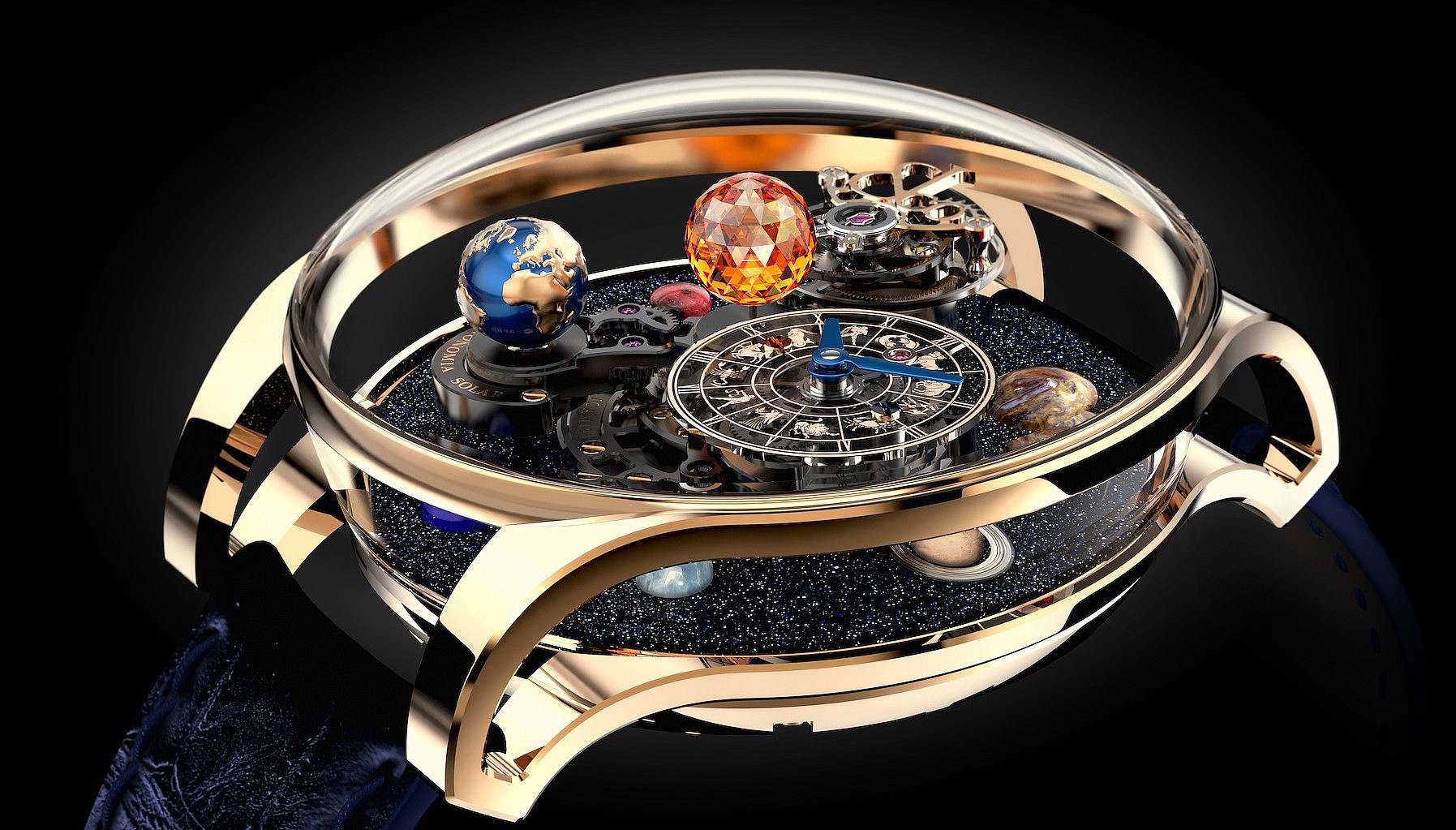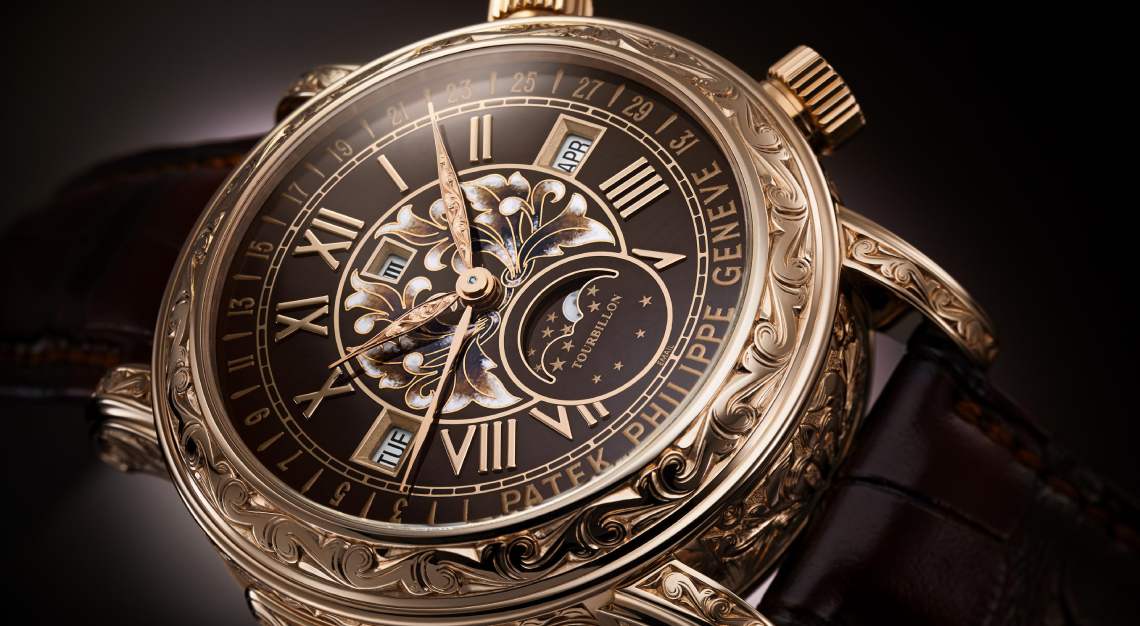A bespoke timepiece is the ultimate for watch aficionados. One collector describes the long road from commission to big reveal
What you’re looking at is one of the last watches that Christian Klings is likely to make. And, somewhat improbably, it belongs to me.
Christian, originally from East Germany, as it was known in his youth, is a watchmaker. He’s not a brand or a company or a team of craftsmen. It’s him, his two hands, some tools, synthetic ruby and lumps of stainless steel. This piece was designed by the pair of us, not chosen from a range of previous models. Christian has since semi-retired. Over a nearly 50-year career, he has made a grand total of 33 watches. Mine was the 30th. And it came into being through a fortuitous combination of connoisseurship, connections and not a little luck.
Back in 2018, Phillips auction house held a preview in Hong Kong that included an exhibition of independent watchmakers curated by Claudio Proietti of Maxima Gallery. The pieces were fabulous, brimming with beauty and ingenuity. One in particular caught my eye: a simple three-handed timepiece by Christian Klings. I asked to hold it and was struck by a sense of déjà vu.
My day job is cofounder of the Armoury, a men’s clothier in Hong Kong and New York. Part of my work involves representing and commissioning bespoke craftsmen from around the world – specifically Florence, Milan, Naples, Tokyo, Kobe and Osaka – for my clients. These artisans each have their own specialties, ranging from Florentine and Neapolitan tailoring to Japanese glasses and bags. What is common among all of them is extensive handiwork and the subtle imperfections that come with truly handmade things. I believe to own something lovingly crafted by hand is sublime. That day at the Phillips auction preview, Christian’s watch gave me the same awestruck feeling that I’d experienced so many times before when dealing with the best craftspeople for myself or my clients. I knew I was holding something very special in my hands. I have been collecting watches for 16 years, and while I have long entertained the thought of commissioning a timepiece of my own, I never felt the impetus to do so until I met Christian.

Christian was born in 1957 in Dresden, then on the Communist side of Germany. At age five he displayed the beginnings of the raw talent that he would later nurture: he amused himself by taking apart and reassembling alarm clocks and pocket watches. Fortunately for him, a friendly neighbour, who happened to be employed at a nearby metalworking factory, provided him with tools and guidance. Soon, along with a friend, he was dismantling, rebuilding and servicing motorcycles. (It’s a striking coincidence that motorcycles seem to be a shared interest among many of the watchmaking greats, including George Daniels and Derek Pratt.)
Upon completing high school, Christian became an apprentice watchmaker in Dresden, repairing and restoring countless complex clocks, pocket watches and wristwatches that had been brought into East Germany prior to the formation of the Communist state. He had a strong desire to see more of the world, and he eventually moved to West Germany and then California, where he lived for a decade and began creating his own timepieces while continuing with his by-then considerable and esteemed restoration work.
In 2000, a decade after the German reunification, he found himself back in his homeland, initially working almost exclusively with a single wealthy collector who commissioned a number of unusual and complicated timepieces. As always, Christian made them by hand. One of his passions within watchmaking is the escapement, the regulating organ of any timepiece, and he invented and realised several novel designs of this crucial element on his own. He settled in the sleepy town of Saalfeld, south of Weimar, and quietly made watches, signing them “C. Klings”.
Dealing with craftsmen is not always a straightforward matter, a stark contrast to how easy commerce has become in the internet age. A commission is an undertaking that is done together; it’s about forging a relationship and creating a product out of that connection. You reach an understanding of what can be achieved, but it can often be hard to predict what challenges may arise as the item is being made.

I initially met Christian over e-mail, introduced by my friend Jiaxian Su, who runs watchesbysjx.com, and we discussed ideas I had for my own piece at length. I’d taken some watchmaking classes at the Horological Society of New York, which helped with the process. Christian and I communicated almost exclusively via e-mail. While he speaks fluent English, it was sometimes a struggle for both of us to make ourselves understood. Thankfully, Christian drew a lot of diagrams, and I annotated a fair number of photos. It was also very useful to have a written record; otherwise, I would have forgotten some of the specifics that we’d previously discussed.
Starting with the dial, I wanted it to be similar to the original piece I saw in Hong Kong, but with chapter rings (decorative tracks under the markings for hours, minutes and seconds) that were slightly offset from one another. Pocket watches often have such a layout, whereas wristwatches rarely do because the rings might become illegible. My dial’s sub-seconds chapter ring dips slightly below the hours and overlaps with the minutes ring at six o’clock. Sometimes Christian would construct the same part twice, each with a slight variation to make it easier for me to visualise how it might look when the dial was complete. For instance, he presented me with two sub-seconds chapter rings, each in a different width; I chose the narrower.

I specified Breguet hands. This style, named after its inventor, the great Abraham-Louis Breguet, is difficult to balance aesthetically. It requires an appealing, curvy shape to the main, long part, followed by a ring with a slight glimmer on its interior edge to catch the eye and, finally, a purposeful, sharp tip to identify the time precisely. Christian’s hands were initially a little too bulbous, so he carefully thinned them to pair better with the fine Roman numerals. The subtle, symmetrical texture on the dial, known as guilloche, is carved by hand with the help of a lathe, akin to a very intricate spirograph. It’s incredibly arduous, slow and delicate work. I liked what I saw on the original piece and requested mine be done in the same way, a barleycorn pattern for the majority of the dial and a sunburst for the sub-seconds.

The dial is a distinct salmon colour and a rather last-minute addition. As it was being constructed in 2020, Christian and I were in frequent contact to make small design decisions. At this stage, the dial had no hue. The markings had not been filled in with ink, and the hands had not been treated to have colour yet, either. I wanted to explore a salmon dial and mocked it up in Photoshop, adding the shade to the main parts of the dial and creating a two-tone effect.
It generated an enthusiastic response from Christian, who e-mailed in his typically charming, if spell-check-free, manner: “Thanks for the design. It looks great. The dial with the slender chapter ring and outside section in rose gold looks fantastic. Exaxtly my taste. I did a similar design with Nr.6 with the powerreserve on my webside, and like to continue this idea. Makes me feel good.”
The colour was added by galvanic plating (a type of electroplating), one of the few things Christian cannot do himself. Imagine the anxiety he must feel when sending a dial with its completed guilloche off to a third party, hoping it comes back unscathed. I left it to Christian to select the precise shade of salmon and was quite pleasantly surprised to see it in the metal, with its bright pink-yellow peaks of the guilloche pattern but darker, more saturated pink-red in the troughs. I’m glad I trusted him.
The watch case is Christian’s own design, replete with gentle curves. It has a broad, very softly rounded bezel with short, downward-turned lugs that are widely spaced. The overall effect is slim and pebble-like, reminiscent of a pocket watch from a bygone era. Christian shaped the case by hand, which allowed him to continuously vary the radius of each curve in a very organic way.
Perhaps unsurprisingly, the movement was the greatest challenge. In Christian’s words, “It was as hard to make as a tourbillon.” I was always keen to have an “open-worked” movement. Typically, movements will be a combination of plates and bridges holding the wheels together. Plates are more stable but also hide a greater area of the technical details. An open-worked movement, which is visible on the finished watch, does away with most of the plates and instead relies primarily on bridges: small arms anchored by screws to secure all the wheels. It’s a tremendously difficult balancing act to fashion the bridges by hand with an aesthetically pleasing shape, to bevel and polish them to a beautiful shine and then install them perfectly parallel to the main plate. As you can imagine, the wheels of the movement need to mesh precisely – were the bridges to be even slightly askew, the watch would simply not function. There’s a reason most brands choose not to make their movements in this manner.

What compounded the difficulty for my piece was its size. I like smaller watches, typically 34 mm to 37 mm in diameter. I enjoy how discreet they are and how they feel on my wrist. In today’s world, there are only a handful of modern watches that are less than 38 mm. Indeed, Rolex is the only major manufacturer making 36 mm watches in any significant quantity. So it was a pleasure to be able to commission a “small” watch from Christian. Given my request for an open-worked movement, the watch could not be any less than 36.5 mm, as the movement parts simply could not be miniaturised any further. He worked at the physical limits of his eyesight and muscle control.
A friend asked me if commissioning a watch is like commissioning a suit, and yes, there are similarities. You start with a rough idea of what you would like and then discuss how it might be realised, keeping some plans and discarding others. Over the years, I have come to deeply appreciate other people’s taste and experience. I’m always happy to pay for that benefit. The finest artisans will give their customer a gentle nudge when an idea goes beyond the pale. It’s a comfort to know that when I’m in doubt about a choice in the detail of a commission, I can defer to them for sage advice. I have seen time and time again, with my own items and those of my customers, that the commissions that turn out the best are based on a good relationship with the craftsperson and a willingness to listen.
I am fortunate that Christian and I have quite similar tastes. At one point, he wrote me: “I would like to disguss something with you. I hesitate to fill the roman numbers with the same dark colour, like the hands. I think, it looks overpowering. I don’t like to loose the delikate look, graceful look of the dial.” I was glad he highlighted this issue to me. I had originally anticipated using black markings by default, but Christian suggested anthracite, which was a subtle but very welcome improvement.
People like Christian, who make every part of the watch bespoke, from scratch and by themselves, are exceedingly rare – he’s one of the last few who even attempt this extraordinary art. There are many outstanding watchmakers who, having come up with a great concept, will produce it in a small, limited series with little to
no deviation in the design and often with a team of artisans. And there are, of course, excellent makers who offer bespoke watches, but the individualised elements are restricted to certain fixed parameters: a change in colour on part of the dial or of the hands, for example. The watchmakers who choose to work in these ways are sensible and wise. Limitless possibility can result in a very confusing design and production process and potentially a dud of a final timepiece. Working by yourself can be lonely and stressful. Watches are delicate and unforgiving. A screwdriver tip in the wrong place or a part that’s one one-hundredth of a millimetre too thick will shatter weeks of progress. Why would anyone want to take on this sort of endeavour and also do it alone?
I posed exactly this question to Christian over the phone one day.
“This is a talent I have,” he told me. “I’ve been doing it since I was a small kid. I have a good, fine touch – I knew this all the time. I was raised by a very calm and gentle old lady, and she taught me a lot of patience and discipline. I spent quite a bit of time by myself, and working with my hands on mechanical things was a way to keep myself occupied. The way I do it, nobody else can do it for a long time. It’s too crazy.” I asked if that perseverance is useful in other areas of his life. “I am retiring because I have decided to spend more time doing social work with my church,” he replied. “Many years ago, when I was still in the USA, I joined the Seventh-day Adventist Church and it became a big part of my life. Having great patience and discipline is so important in social work.”
What I admire most about Christian is his self-reliance. In his solitude, he reminds me of Olympic competitors toiling for years in preparation for a decisive moment that can define their legacy and that depends on their effort alone. The world is filled with wonderful things that came into being from the combined contributions of many people. The creation of a single product by an individual carries a very different energy. One person can never execute every detail faultlessly, but it’s thrilling to see them try. The best will come close to perfection, as if nearing the divine. If you look carefully at the photos on these pages, you might notice there are some flaws in the watch. How could there not be? Like so many of the truly finest things, it was made by hand.
This story was first published on Robb Report Australia & New Zealand






